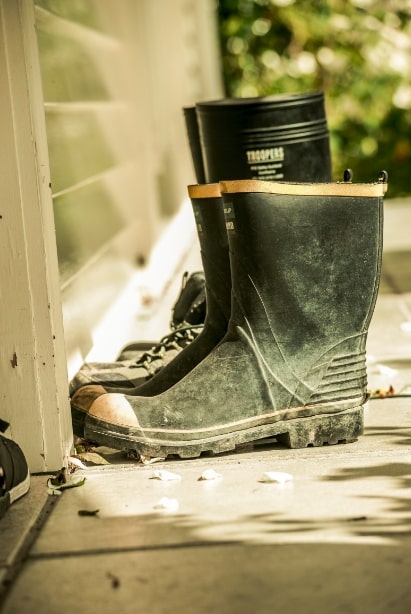A common question hikers, dog owners, and festival goers ask is whether they should use walking boots or wellingtons. They want to know which footwear option suits their needs the most. It’s true that both kinds of footwear are matched to similar activities. However, there are essential considerations that demand your attention. We’re going to look at both options and go over the differences between them.
How do the two differ?
First donned by aristocrats at the start of the 19th century, wellies have remained a staple of practical footwear. Originally, we made them using leather, but now they are PVC, rubber, or special materials. Made for agricultural or outdoor activities, they are great for walking on muddy and wet ground. They keep the wearer safe from puddles and heavy rain. Classic styles reach just under the knee, however you can find shorter lengths too.
Walking/hiking boots are meant to safeguard the ankles and feet during several outdoor activities. Examples include climbing, mountaineering, and backpacking. They are a substantial part of any hiker’s kit. The durability and quality of the boots dictate their ability to walk lengthy distances without injury. They need to offer comfort for long walks over rough environments. Usually made with leather or nylon, they are often waterproof and very durable.
Similarities exist between walking boots and wellingtons. Both are suitable for some of the same activities. As for the fundamental distinctions, walking boots are meant to keep you safe from injury. You need to think about this when you’re heading out on your next venture or working.
Be prepared with footwear
As we’re all aware, the British weather isn’t exactly predictable. As a result, we need to prepare for anything. Wellies can come in handy for wetter days. You get more warmth if you compare to other kinds of shoes.
Various kinds are good for walking, but not all of them can fit this purpose. You could be looking to buy some for standard walks. If so, see to it they come with a slip-resistant, tough sole that protects against water. Hikers are better off going with walking boots since they will get more grip and control on even ground.
Another important fact is that full-length wellies can feel different compared to shoes or walking boots. With the correct size and right socks though, they can be comfortable and you can adjust to wearing them.
Both walking boots and wellies offer excellent grip and protection during snowy days. Similar to mud, your choice of footwear will come down to the depth. The vital thing here is wellingtons are waterproof. A knee-length pair will see to it that even the deepest snow won’t dampen your socks or trousers. For walking boots, you’re better off having a thick sole. Additionally, they need a fully waterproof upper. This will stop water seeping inside your shoes.
Are walking boots or wellies better?
Both are wonderful for wet, cold conditions. Although, knowing which ones to pick can be tricky at times. The answer ultimately comes down to the event or activity you are partaking in, the ground conditions, and weather. If you intend to walk long distances, or are going on a hike, walking boots are safe and the most comfortable.
Wellies are better for shorter walks in muddy or wet areas. This is especially true if you intend to enter a pool of water or the mud is deep. People working outdoors, like gardeners or farmers, tend to favour them and their practical nature. They supply protection in all weather conditions. This is vital if you spend much time outside on your feet.
Browse our wellingtons
At JS Hubbuck Ltd, we have multiple wellies available for purchase. They include Leon explorer, Purofort plus, and Vierzonord. Each pair will serve as valuable footwear if you need to deal with wet or muddy conditions. They can also be comfortable for all kinds of agricultural work.
If you’d like more information about any of these wellingtons, feel free to speak to us. We’d be happy to help because we understand how important good footwear is here.

